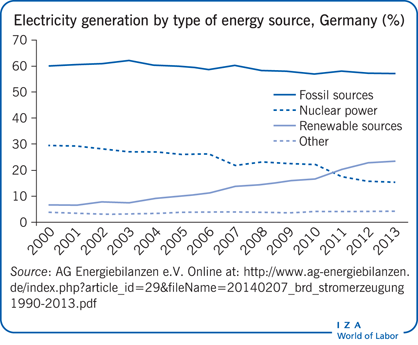Elevator pitch
Many industrial countries are replacing conventional power plants with renewable energy sources. Green energy policies might affect employment in different ways. A policy shift toward a low-carbon green economy may create new and additional “green jobs” in renewable energy sources and energy-efficiency technologies. However, this may potentially come with the crowding out of employment in other sectors. In addition, energy prices may increase owing to feed-in tariffs subsidizing renewables. The resulting burden may in turn stifle labor demand in industrial sectors and reduce the purchasing power of private households.

Key findings
Pros
A green energy policy creates more “green jobs” in renewable energy sectors.
A shift toward more renewable energy sources improves environmental quality by reducing emissions of ambient air pollutants, beneficial for health and labor productivity.
Cons
Subsidizing renewable energies by feed-in tariffs increases energy prices for firms and private households.
Rising energy prices put industrial jobs at risk when labor and energy are complementary inputs in industrial production.
Estimates of net employment effects are, though positive, small at best.